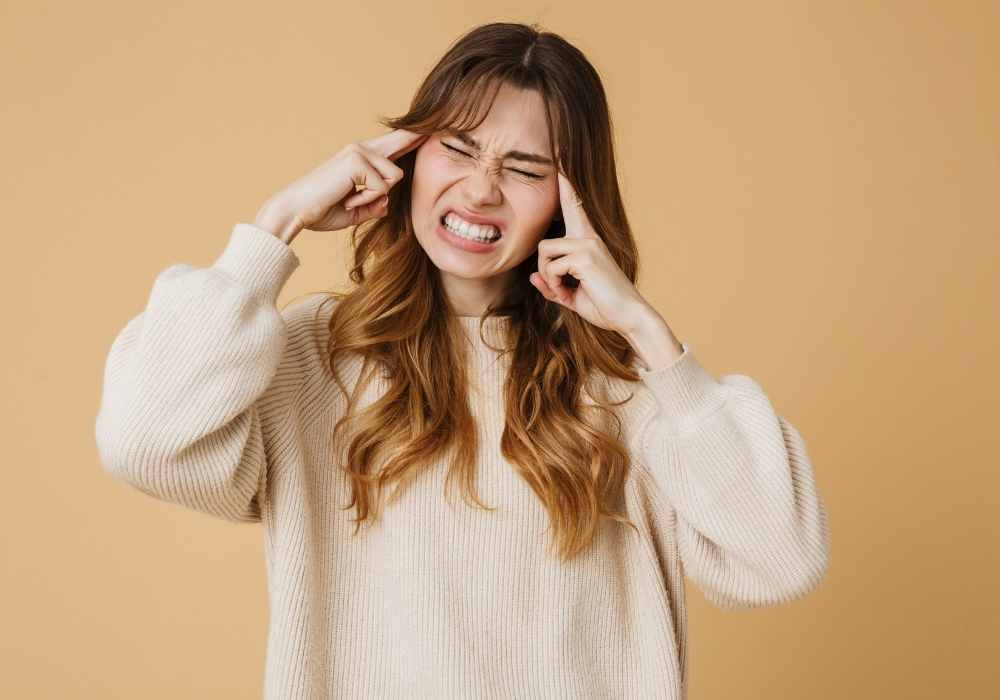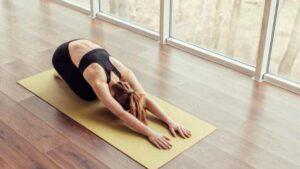Note: All the asanas and techniques below must be practiced under able guidance. Every person is different and hence every person’s migraine case is different. Consulting a specialist personally is strongly recommended.
What is Migraine?
Migraine is more than just a bad headache. It’s a neurological disease. It’s a disorder that most researchers believe involves nerve pathways and brain chemicals. It is genetic in nature.
Extreme throbbing headache accompanied by a combination of discomforts like nausea, vomiting, diarrhea and dizziness may last anywhere from 4 to 72 hours. It can drastically reduce the quality of life and can almost be crippling to the sufferer.
Diagnosis of Migraine is probably the hardest part. It gets manifested in a variety of ways in people and is often misleading. Also, the symptoms progressively change in many cases. For example, a child suffering from Migraine (yes, children as young as 18 months can be victims too) may experience unexplained motion sickness, nausea, abdominal pain or dizziness while the head pain may not be very prominent. In such a case, migraine may go completely unnoticed. In females, occurrence of migraine attacks increase after puberty due to fluctuations in estrogen levels. It may accompany menstruation and again may not be considered during diagnosis.
Once the diagnosis is done, choosing the right kind of treatment can be equally daunting. With over 100 drugs, surgical methods and devices, it takes a lot of trial and error before a treatment can be zeroed upon.
However, alternate medications like yoga and acupuncture can tremendously improve the quality of life of Migraine sufferers. Recently, a 46-year old Natalie has reported drastic improvement in her health after she got her ears pierced! Experts are reckoning it is similar to acupuncture.
Statistics
-Migraine features in the top 20 of world’s most disabling medical illnesses
-Around 14 million people experience headache on a nearly daily basis
-Women are 3 times more likely to suffer from it than men
-More than 10% of Migraine sufferers are children
Migraine: when head ache is just one of the problems
Last week, we explored what a migraine technically is. We saw the difficulties in its diagnosis and went through migraine statistics. In this article, we’ll try to understand how it actually feels and what the general symptoms are.
Symptoms:
Symptoms of migraine vary from person to person and can be quite ambiguous. Some of them are:
-Pain in one side of the head
-Nausea and vomiting
-Tunnel vision
-Dizziness
-Pulsating or throbbing pain in the head
-Feeling irritable or even depressed
-Some people experience food cravings before they have a migraine attack
-Difficulty in falling asleep
-Excessive yawning
-Sensitivity to smell, touch, light and sound
These are the major symptoms people experience but there are many others that can be specific to just small groups of people.
How the pain actually feels cannot be completely understood unless we experience it. But here are some people’s experiences we’ve compiled from the Internet that might help us get an idea.
“I feel like I’ve had a stroke.”
“Like your brain is trying to forcefully come out of your skull and the pain throbs with each heart beat … Right eye and temple. Every time”
“I remember turning to a flickering light and flinching because I thought something was flying towards my face, but there was nothing there.”
“..light sensitivity, dizziness, confusion, sound sensitivity, slurring and visual disturbances of red zig-zags darting across my line of sight.”
“I have found these attacks very debilitating, causing educational, work and social problems.”
Yoga therapy for Migraine
After discussing about what migraine is, it’s symptoms and what it feels like, this week we’ll start with yoga asanas that’ll help ease the suffering. Let’s jump straight into it!
The first Yoga Asana we’ve chosen is Matsyasana.
Matsyasana
Note: Avoid this asana if you’re having neck pain, or you have sore throat and cough.
Technique:
- Lie on your back
- Fold your legs like you do in Padmasana
- Gently lift your upper chest using the support of your arms
- Arch your back and place the crown of your head on the mat
- Expand the chest. Ensure both the hips are evenly pressurized
- Weight should be more on the hips than the head.
- Hold the position for around a minute.
- To come back from the position, push the elbows into the floor, lift the head on exhalation and release the body to the mat on inhalation. Release the legs.
- Repeat the asana two more times.
Common mistakes:
- Loose legs and back – both should remain active
- Thighs are raised from the floor in Padmasana – work with the elbows on the mat for support
- Collapsed spine
- Entire weight is on the elbows – shift the weight to the hips and arch the spine well
- Placing all the weight on hands
- Weight on the head and neck
- Crushing the head against the floor while coming down – lift the head and look forward when coming down
- Moving the head and neck while in this position
- Rushing into the position too fast
Pranayama for Migraine
We discussed about Matsyasana last week. Apart from asanas, even pranayama can be of great use for migraine sufferers. In this post, we give a brief description about Nadi Shuddhi pranayama.
Technique: Sit in any comfortable and steady meditative position. The spine should be erect, the body and mind relaxed, eyes closed. Place the left hand in Chin or Jnana mudra on the knee, right hand in Nasika mudra (thumb controls right nostril, ring and little finger control left nostril). Inhale and exhale naturally once through both nostrils. Close the right nostril with the thumb, inhale through the left nostril. Close the left nostril with the ring finger, then release the thumb and exhale through the right nostril. Keep the left nostril closed and inhale back up through the right nostril. Close the right nostril and exhale through the left nostril. This constitutes one round. Breathing ratio is 1 (inhalation – Puraka): 4 (retention – Kumbaka): 2 (exhalation – Rechaka)
Sarvāngāsana
This week, we’re taking up Sarvāngāsana in our Migraine therapy series. This asana may look very advanced. But by practicing it’s variation in the beginning and with able guidance, Sarvāngāsana can be adopted effectively to alleviate the headaches due to migraine. The variation of this asana is done against a wall.
The asana, in the original form is done as follows:
Technique: Lie down on the back. Bend at the knees, pull the thighs against the chest and push the waist up. Bring the legs over the face. Bend the arms at the elbows and try to keep them as close as possible to each other. Support the middle of the back with the hands, fingers pointing out. Tuck the chin into the chest. Raise the legs straight up. Make sure the waist is above the shoulders and the feet are flexed down, with the toes coming in front of the waist. No weight should be on the neck. Tighten the buttocks and the abdomen to lift the spine. Keep the feet together and relaxed. Hold for 60 to 180 seconds. To come down, bend at the knees and release the spine vertebrae by vertebrae slowly onto the floor.
Common Mistakes:
- Pointed toes – use only to correct position, feet should be relaxed.
- Legs leaning back over the head – bring the waist towards the head and take the feet slightly back.
- Collapsing the legs – tighten the knee caps and bring the feet together.
- Collapsing the hips/lower back – tighten the buttocks and lift the spine.
- Too much weight on the wrists, arms and neck – try to bring the elbows closer together and lift the spine.
- Turning the neck in the final position – keep the neck still and steady.
Next week, we’ll reveal another asana that helps one combat their Migraine problems. Stay tuned!
Mukha Dhouti
Continuing the Yoga Therapy series on Migraine, we chose Muka Dhouti for this week after much discussion with the Yogacharya. This is a very basic thing every yoga enthusiast must practice.
The migraine sufferer can benefit greatly from Muka Dhouti. It basically involves inhaling through the nose and forcefully exhaling through the mouth.
The finer details can only be imparted by the Yogacharya and hence, we decided to share with you a video in which Bharath Shetty himself shows you how Muka Dhouti is practiced.
Important Note: Perform this with an expert guide who personally understands your condition.
Shanmukhi Mudra
Shanmukhi Mudra is one of the prominent Mudras all yogis should be practicing. It aids in balancing the internal and external aspects of your physical body and the mind. Spiritually, it induces a state of Pratyahara or a sense of withdrawal.
Shanmukhi Mudra is of excellent help to migraine sufferers. One learns to manage headaches and other things like nausea, vomitting and sensitivity to light and sound that are associated with Migraine. It instills faith in the patient that they can handle it and hence, they fear headaches lesser and lesser as they make progress in the practice of this Mudra.
Practice:
• Sit in any comfortable meditation asana.
• Hold the head and spine straight. Close the eyes and place the hands on the knees. Relax the whole body.
• Raise the arms in front of the face with the elbows pointing sideways.
• Close the ears with the thumbs, the eyes with index fingers, the nostrils with the middle fingers and the mouth by placing the ring and little fingers above and below the lips.
• Release the pressure of the middle fingers and open the nostrils.
• Inhale slowly and deeply, using full yogic breathing. At the end of inhalation close the nostrils with the middle fingers. Retain the breath inside for as long as is comfortable.
• Try to hear any manifestation of sound in the region of bindu, ajna or Anahata chakras. There may be many sounds or none at all; just listen. After some time, release the pressure of the middle fingers and slowly breathe out. This is one round.
• Breathe in again immediately to start another round. Continue in this way throughout the practice.
• To end the practice, lower the hands to the knees, keeping the eye closed and slowly begins to externalize the mind by becoming aware of external sounds and the physical body.
Duration: Practice for 5 to 10 minutes to begin with. Then, gradually building up over a period of a few months, increase to 30 minutes.
Note: Expert guidance advised.
Tags: Yoga For Migraine, Pranayama For Migraine, Yoga For Migraine Adriene, Yoga Asana for Migraine, Yoga Poses For Migraine, Yoga Classes For Migraine, Meditation For Migraine, Yoga Therapy For Migraine
Yoga Teacher Training in Rishikesh – 200 Hour Yoga Teacher Training in Rishikesh – 300 Hour Yoga Teacher Training in Rishikesh – 500 Hour Yoga Teacher Training in Rishikesh – Yoga Retreat in Rishikesh




